5 take-away ideas from RHS Chelsea
Thought about installing rain chains? I share 5 ideas from RHS Chelsea including rain chains and edible meadows, plus I dip into the fascinating world of soil ecoacoustics!
My top five ideas from RHS Chelsea
Rain chains
2024 was definitely the year of the rain chain. I spotted them in several gardens and I have included a few here. Rain chains are connected to guttering to replace the downpipe. They channel water to a water butt, dipping pond, swale or rain garden etc, diverting the rainwater away from the drains, slowing the flow of water and helping in water harvesting. They can be ornamental, and depending on the design, can add the gentle sound of moving water to the garden.
You have to be careful though, as some designs spill the water out, especially during heavy rain and you end up with water all over the place. To be effective, you need a decent width of eave which will carry the water away from the wall and the foundations of your house. They are not usually suitable for windy locations either. Another consideration is that they cannot cope with as much water as a down pipe, so may not be great during the deluges that we are experiencing more frequently, and in icy weather, the water can actually freeze on the chain. So it may be wise to experiment with them on a shed or verandah to see how how well they work.
The following images of rain chains were taken in Costa Rica. Notice how the design is far more substantial and copes well with heavy rain (see video).
Permeable paths
Permeability is so so important when it comes to slowing the flow of water – during heavy rain it’s important to get the water into the ground and a permeable path helps. I spotted a lovely permeable path in Ann-Marie Powell’s Octavia Hill Garden (named after the Victorian activist who believed that ‘the healthy gift of air and the joy of plants and flowers’ were vital for everyone). The embedded bricks gave interest and texture to the path.
Balcony composting
Much is made of the fact that there is no space to compost household waste when you have a small garden or balcony. Well, designer Tsuyako Asada tackled this problem in the unconventional Tomie’s Cuisine the Nobonsai Balcony Garden - a no-waste, plastic-free balcony garden with plenty of lifestyle tips and sustainable gardening methods.
One of the key features was a simple composting system made from a terracotta rhubarb forcer which was partly buried in the soil of a large planter. It was perfect for dropping in vegetable and garden waste, with a lid to keep out the flies. The food rots down and the resulting liquid seeps into the planter. However, I did wonder about rats and flies etc, so it may be wise to use Bokashi methods perhaps?
This composter is rather like the composting system I first saw in Kenya years ago and which I have used in my veg beds - a key hole garden. This is a raised circular bed with a compost bin in the middle. I wrote a blog on this a few years ago.
You have to watch the weight of planters and containers on a balcony, so the Nobonsai planter was filled with paper and cardboard and topped with soil, in the style of a hugel bed.
I use a similar method in my raised beds. In fact, most of my raised beds have a layer of logs and wood chip at the bottom to provide a long term source of nutrients and to hold moisture and of course, to reduce the quantity of compost that is required to fill them.
Creating microhabitats
I have a lot of gabions around my perennial veg garden, each filled with stone, brick and tile and they make a fab microhabitat for invertebrates, and even lizards and snakes. I saw something similar on the Pulp Friction Growing Skills Garden. In fact, there were many neat ideas in this garden.
The show gabion was a step up from the standard metal ones, with a super arrangement of recycled materials that were ideal for planting succulents and creeping plants. Its something that can easily be achieved at home. And look at the end of the recycled fire hose - its stuffed with bamboo for bees.
Edible meadows
I was really looking forward to seeing the Microbiome Garden (supporting Bowel Research UK), and it didn’t disappoint, gaining a well deserved gold. Designers Chris Hull and Sid Hill had created an amazing edible meadow with camassia, bistort, yellow lupine, sweet cicely, bladder campion, chervil, Italian bugloss, dill, chives, sweet violet, plus grasses (autumn moor grass, quaking grass, foxtail barley, tufted hairgrass). These are all easy-to-grow plants and you could create something similar in your own space – attractive, adaptable, resilient and edible!!! Can’t beat that.
Sid has a wonderful innovative approach and I’ve listened to several of his talks, which I think you can find online. You can read more about edible meadows on his website and YouTube channel.
The microbiome is something that I find fascinating and we all need to get a diverse mix of plant foods into our diet. I have read that our microbiome can adapt to the foods that we grow and eat. Do gardeners have a more diverse gut biome than somebody who doesn’t touch the soil? Can any one point me to some research?
Sounds of the soil
Sid’s garden spurred me to dig a bit deeper into the research around the gut microbiome and I stumbled upon soil ecoacoustics. Researchers are listening to the soil to learn more about its biodiversity without having to disturb it. They have found that soils of intensively managed farmland or degraded woodland are quieter than those of restored woodland, for example. They are even learning to identify the sounds made by key indicator species of healthy soils as a means of developing a quick assessment tool.
Please have a read of the this article and listen to the sounds of soil!!! I need to find out more because I would really like to listen to my soils!
Coming up next week
I have just returned from a few days in Spain where I went to learn more about how climate change is affecting gardens and trees. Next week I’ll focus on my visit and share some of my findings and ideas for creating more more resilient garden.
Happy gardening
Sally
Diary of talks and webinars
Talk 30 & 31 May Sally is giving a talk at the Bath and West Show, Shepton Mallet - 12noon on Thursday and 12.45 on Friday
Talk 15th June Kim is speaking at the BBC Gardeners World Live Show
Talk 4 July Both Sally and Kim are speaking at RHS Hampton Court. Sally’s slot is 4pm on the Thursday on the How To stage
Talk 13 September Talk by Sally at Yeo Valley Gardens, Organic September Celebrations, nr Bristol






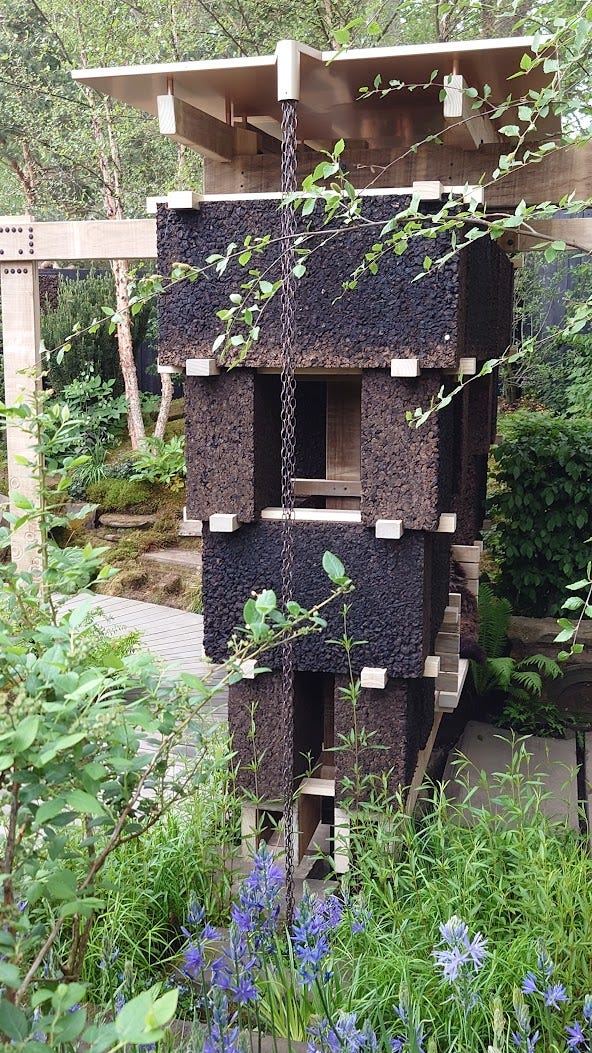
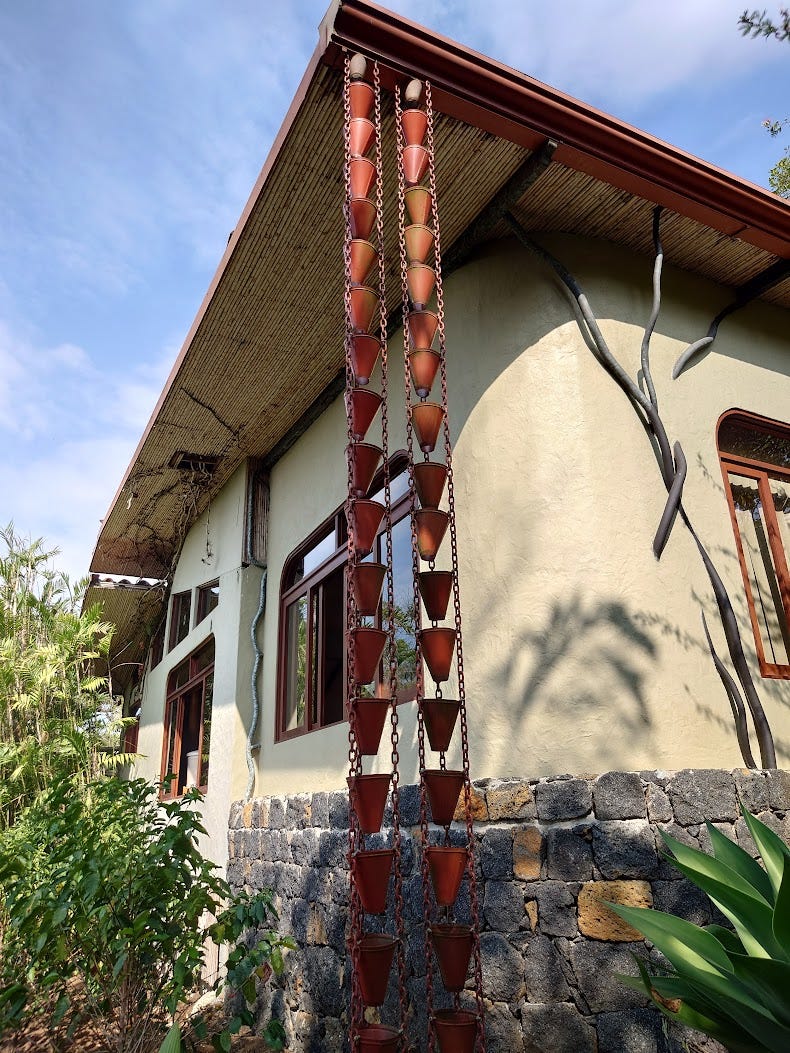
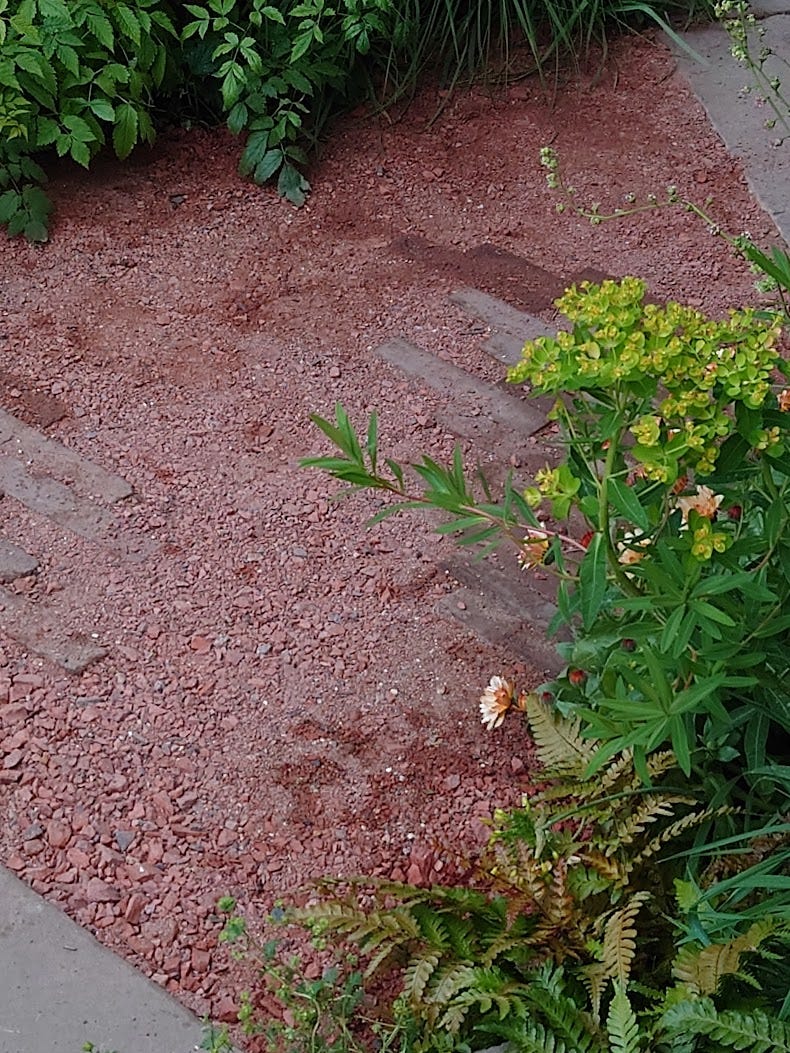

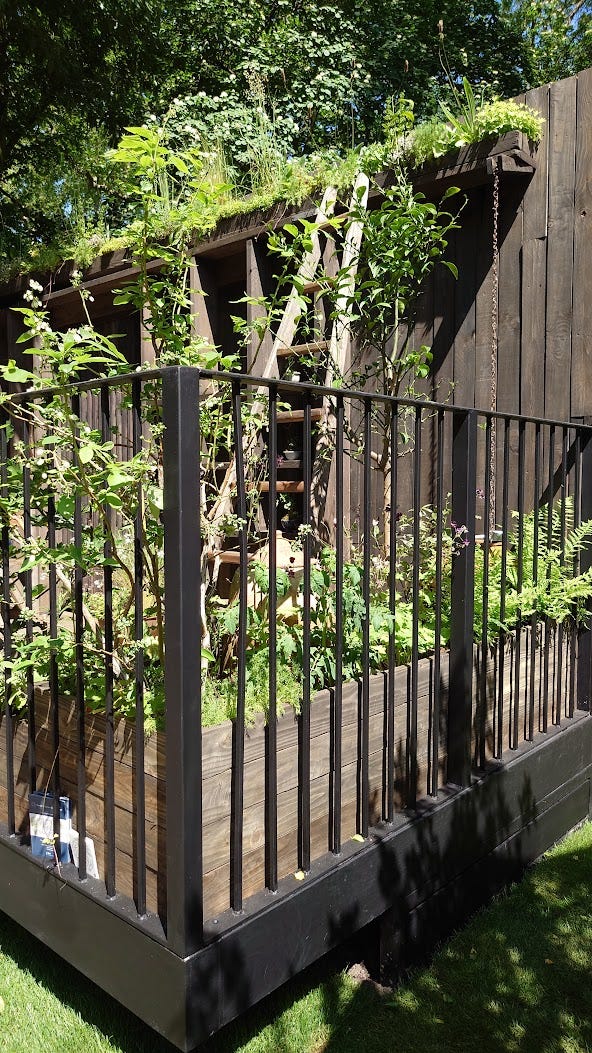
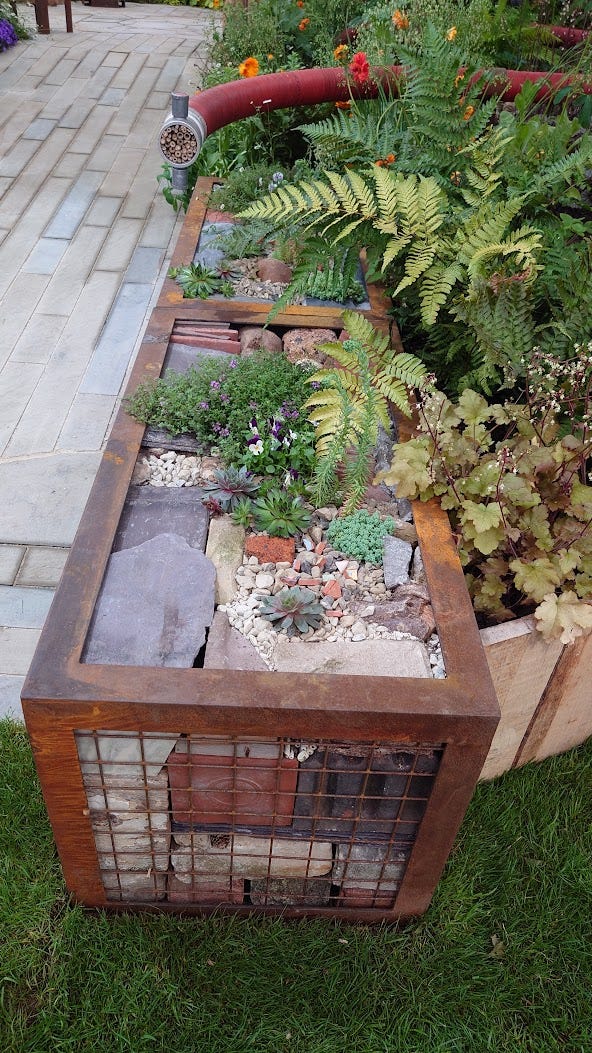
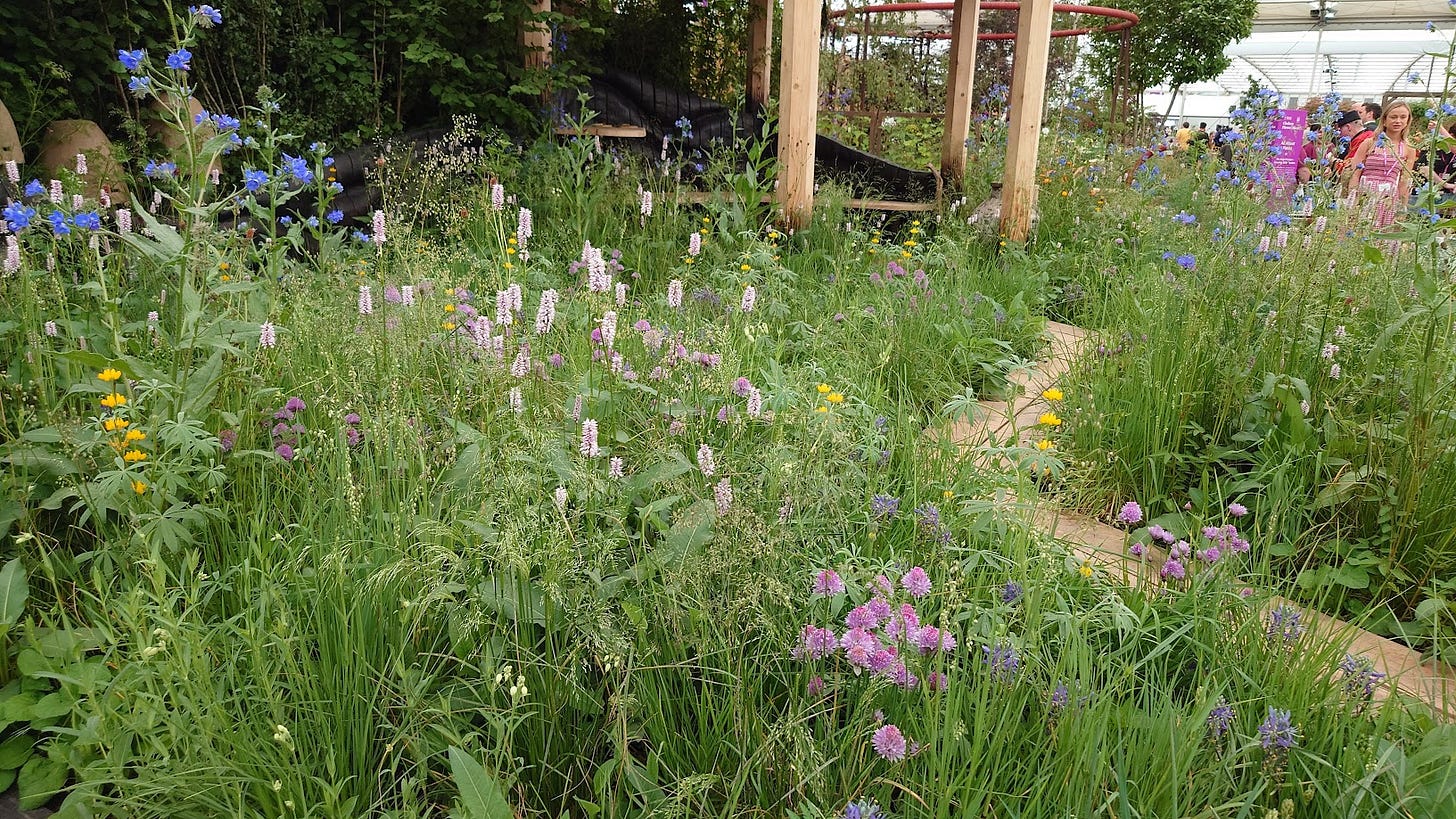
Love the idea of the chains also will be a lot less noisy!